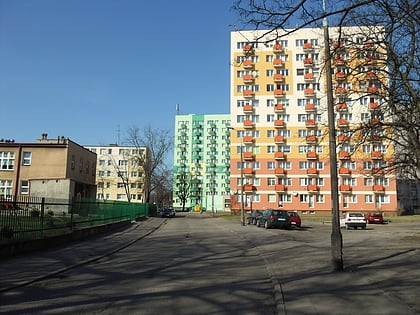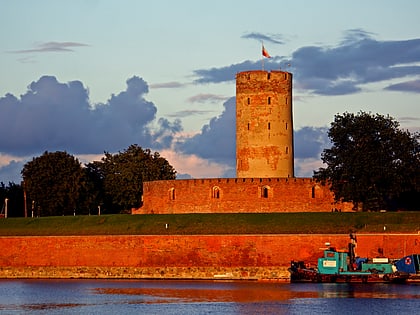Rezerwat Ptasi Raj, Gdańsk


Facts and practical information
Ptasi Raj Nature Reserve - a bird sanctuary on Gdańsk's Sobieszewo Island, at the mouth of the Wisła Śmiała River into the Gulf of Gdańsk. The reserve comprises several larger and smaller water reservoirs, including two lakes: Ptasi Raj and Karaś, and the surrounding marshes, meadows and forests. This area has been partially protected since 1916, when the pasture management was conducive to maintaining habitats for waders. In the 1930s, the area of the Swalla River estuary was the only known breeding site of the sandwich tern. In the 60s and 70s, in the reeds growing on the northern, marshy shore of the lake Ptasi Raj there was a large roost of starlings, where over 50000 birds were found. They have now been replaced by ducks. The Mute Swan and Whooper Swan are found here.
The reserve protects marsh and water birds. Ptasi Raj is a resting point for birds during migratory flights, including white-fronted and bean geese, which spend the night in the reserve and feed on the Żuławy fields during the day. More than 200 species of birds can be found in the reserve, especially migrating birds, small songbirds and large water and marsh birds. In 1996-2001, 32 wetland bird species nested at the site, including grebes, grasshoppers, bitterns, greylag geese, common pochard, partridge, marsh harrier, green sandpiper, spotted duck, aquatic warbler, crane, eurasian oystercatcher, little ringed plover, little ringed plover, common solitary, woodcock, common tern, sandwich tern, and bluethroat. In 1997 the unique first breeding of common eider in Poland was recorded here. The most important reason for the decrease of the ornithological value of the reserve, which used to be much higher, was the cessation of cattle grazing and the consequent overgrowing of the salt meadows with rushes and their subsequent afforestation with artificially planted alders. In the first half of the twentieth century the following nesting species nested here: dunlin, ruff, pheasant, redshank and stonechat. Currently, the reserve lacks habitats for breeding of these species.
The flora is dominated by a reed rush with the dominant common reed and a grass association Elymo-Ammophiletum typical for white dunes. The following salt-loving species can be found: sea milkvetch, Gerard's rush, salt aster, field bindweed, Winter's milkvetch, centurion and - at the base of the dike - crinkle rose.
The closest towns are Sobieszewo and Górki Wschodnie. The reserve is accessible by means of a nature-didactic path, which has been included in the reserve's protection plan since 1995. It was created in 1999-2003 and equipped at the end of 2004 with two observation towers, which were ceremonially opened to the public in April 2005.
Wyspa SobieszewskaGdańsk
Rezerwat Ptasi Raj – popular in the area (distance from the attraction)
Nearby attractions include: National Maritime Museum, Polish Baltic Philharmonic, Plaża Stogi, Łaźnia Centre for Contemporary Art.
Frequently Asked Questions (FAQ)
Which popular attractions are close to Rezerwat Ptasi Raj?
How to get to Rezerwat Ptasi Raj by public transport?
Ferry
- Stogi - Górki Zachodnie • Lines: F6 (16 min walk)
- Narodowe Centrum Żeglarstwa • Lines: F6 (21 min walk)











